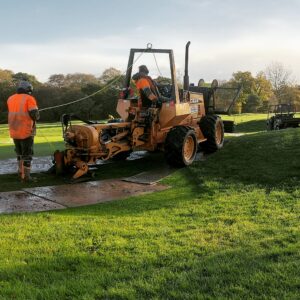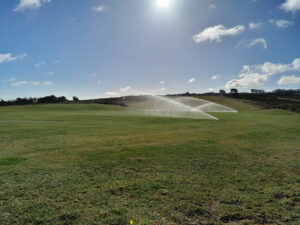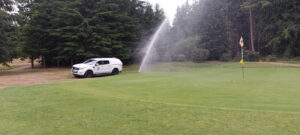Go with the flow
Related Articles
In his latest article on becoming an irrigation technician, John Kidson explains that what is perceived as poor water pressure is often actually a low flow of water, and details what can be done to rectify this.
How do you become an irrigation tech? This is a question I’ve been asked in recent years and there isn’t an easy answer. I plan to continue helping cover this question by sharing technical knowledge and resources.
I receive messages on social media, in person while on site and within my training sessions. I feel the industry is waking up to the need for more available training and knowledge around irrigation.
Flow of water
Within this issue I wish to cover the flow of water, pressure and key items to keep an eye out for!
Let’s start with water. Picture in your mind a garden hose, all wrapped up on a reel and always kinked right at the start of the hose where it connects into the frame. That small kink reduces the flow and the flow will never gain after this point other than over time.
Let’s say the hose has a gun on the end, when you turn on the gun the water flow looks OK for a short period, and then the flow gets lower over time. This is because of the kink early in the water supply. The gun will ask for more than the supply of water can cope with.
When you close the gun, the water volume within the hose will build up.
Most people tell me on site the pressure isn’t very good, but in most cases it’s the flow that’s low. You can create pressure through a tiny pipe, you can’t create a required flow through a tiny pipe.
You will normally see issues arise when adding sprinklers to an existing setup, like extending a tee. You must be mindful of the existing pipework size and its current water output.
Quite often, when sprinklers are replaced, people’s first choice of nozzle is the largest. This can create low flow issues for the entire block when running from a solenoid valve. Just like our hose chat above, if the nozzles are oversized (the hose gun), and flow is low (small pipe being the kink), this can lead to poor coverage and heavy water droplets.
I see this very often, and reducing the nozzle size of all the sprinklers on a tee creates a far better irrigation coverage.
There are other factors such as friction loss, but the main ideal mindset is picturing a nice flow of water when undertaking any works. Consider using as few elbows as possible – no one ever wants to see a swing joint with 15 elbows, and yes, we have all seen the pictures!
If you’re undertaking in-house works, always consider your irrigation and the flow requirements ideally in advance.
Items to consider:
• Can you improve the flow by upping your valve sizes?
• Could you reduce the number of fittings required?
• Older metals over time are affected by corrosion, which reduces the inner bore size of the pipe. Consider the age of the pipe work.
• Are your sprinkler nozzles oversized? Measure the area and check a nozzle chart?
• Isolation valves, your course may or may not have working isolation. It’s good practice to check if these are open. Fairway valves are quite often shut one end for people to easily isolate. This is good for them but bad for the flow!
I will continue my irrigation tech guide over the next few issues and it’s always great to hear from the readers – @JKIrrigation on all socials




























